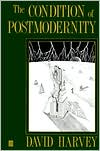Category Books
- Fiction Books & Literature
- Graphic Novels
- Horror
- Mystery & Crime
- Poetry
- Romance Books
- Science Fiction & Fantasy
- Thrillers
- Westerns
- Ages 0-2
- Ages 3-5
- Ages 6-8
- Ages 9-12
- Teens
- Children's Books
- African Americans
- Antiques & Collectibles
- Art, Architecture & Photography
- Bibles & Bible Studies
- Biography
- Business Books
- Christianity
- Computer Books & Technology Books
- Cookbooks, Food & Wine
- Crafts & Hobbies Books
- Education & Teaching
- Engineering
- Entertainment
- Foreign Languages
- Game Books
- Gay & Lesbian
- Health Books, Diet & Fitness Books
- History
- Home & Garden
- Humor Books
- Judaism & Judaica
- Law
- Medical Books
- New Age & Spirituality
- Nonfiction
- Parenting & Family
- Pets
- Philosophy
- Political Books & Current Events Books
- Psychology & Psychotherapy
- Reference
- Religion Books
- Science & Nature
- Self Improvement
- Sex & Relationships
- Social Sciences
- Sports & Adventure
- Study Guides & Test Prep
- Travel
- True Crime
- Weddings
- Women's Studies
The Condition of Postmodernity » (1st Edition)

Authors: David Harvey
ISBN-13: 9780631162940, ISBN-10: 0631162941
Format: Paperback
Publisher: Wiley, John & Sons, Incorporated
Date Published: April 1992
Edition: 1st Edition
Author Biography: David Harvey
David Harvey is Professor of Geography at the Johns Hopkins University. From 1987 to 1993 he held the Halford Mackinder Chair of Geography at Oxford University. His previous books include Social Justice and the City, The Limits to Capital (available in the USA from the University of Chicago Press, and elsewhere from Blackwell Publishers, UK) and The Urban Experience (available in the USA from the Johns University Press, and elsewhere from Blackwell Publishers, UK).
Book Synopsis
In this new book, David Harvey seeks to determine what is meant by the term in its different contexts and to identify how accurate and useful it is as a description of contemporary experience.
Library Journal
Harvey presents an illuminating and powerful critique of postmodernism, arguing that it represents the cultural manifestation of late capitalism and specifically that it emerges from a transformation of time and space to accommodate a shift from a political economy based on Fordism to one based on flexible accumulation. Harvey moves with ease and authority over a wide range of cultural forms from architecture and urban planning to painting and literature. He is well versed in currents of postmodernist theory but avoids the pitfalls of jargon and obscurity. The book is both penetrating and accessible, an important contribution to the postmodernist debate. See also Postmodern Genres , reviewed below.--Ed.-- T.L. Cooksey, Armstrong State Coll., Savannah, Ga.
Table of Contents
The argument.
Preface.
Acknowledgements.
Part I: The Passage from Modernity to Postmodernity in Contemporary Culture: .
1. Introduction.
2. Modernity and Modernism.
3. Postmodernism.
4. Postmodernism in the City: Architecture and Urban Design.
5. Modernization.
6. POSTmodernISM or postMODERNism?.
Part II: The Political-Economic Transformation of late Twentieth-Century Capitalism: .
7. Introduction.
8. Fordism.
9. From Fordism to Flexible Accumulation.
10. Theorizing the Transition.
11. Flexible Accumulation - Solid Transformation or Temporary Fix?.
Part III: The Experience of Space and Time: .
12. Introduction.
13. Individual Spaces and Times in Social Life.
14. Time and Space as Sources of Social Power.
15. The Time and Space of the Enlightenment Project.
16. Time-space Compression and the Rise of Modernism as a Cultural Force.
17. Time-Space Compression and the Postmodern Condition.
18. Time and Space in the Postmodern Cinema.
Part IV: The Condition of Postmodernity:.
19. Postmodernity as a Historical Condition.
20. Economics with Mirrors.
21. Postmodernism as the Mirror of Mirrors.
22. Fordist Modernism versus Flexible Postmodernism, or the Interpenetration of Opposed Tendencies in Capitalism as a Whole.
23. The Transformative and Speculative Logic of Capital.
24. The Work of Art in an Age of Electronic Reproduction and Image Banks.
25. Responses to Time-Space Compression.
26. The Crisis of Historical Materialism.
27. Cracks in the Mirrors, Fusions at the Edges.
References.
Index.
Subjects
 Economics
Economics  Economic Systems
Economic SystemsHistory
 History of Science
History of Science  Science
ScienceHistory
 World History
World History  Civilization - History
Civilization - HistoryNonfiction
 Philosophy
Philosophy  General & Miscellaneous Philosophy
General & Miscellaneous PhilosophyNonfiction
 Philosophy
Philosophy  Philosophical Positions & Movements
Philosophical Positions & MovementsNonfiction
 Philosophy
Philosophy  Renaissance & Modern Philosophy
Renaissance & Modern PhilosophyPhilosophy
 General & Miscellaneous Philosophy
General & Miscellaneous Philosophy  Intellectual Movements
Intellectual MovementsPhilosophy
 Philosophical Positions & Movements
Philosophical Positions & Movements  Postmodernism
PostmodernismPhilosophy
 Renaissance & Modern Philosophy
Renaissance & Modern Philosophy  Modern Philosophy - 20th Century
Modern Philosophy - 20th CenturyScience & Nature
 Physics
Physics  Physics of Time
Physics of TimeScience & Nature
 All Science & Nature
All Science & Nature  Physics
PhysicsNonfiction
 History
History  History of Science
History of ScienceNonfiction
 History
History  World History
World HistoryNonfiction
 Science & Nature
Science & Nature  Physics
PhysicsNonfiction
 Science & Nature
Science & Nature  All Science & Nature
All Science & Nature
